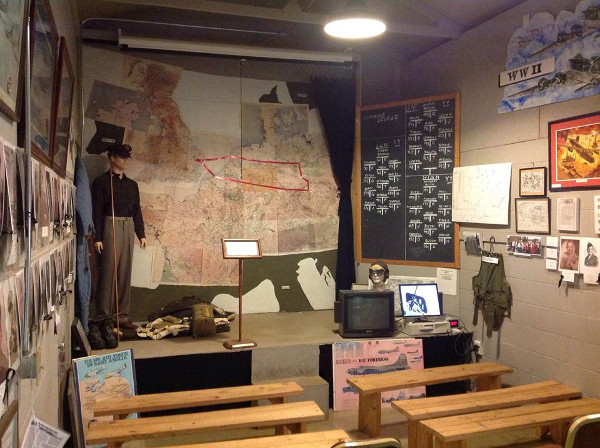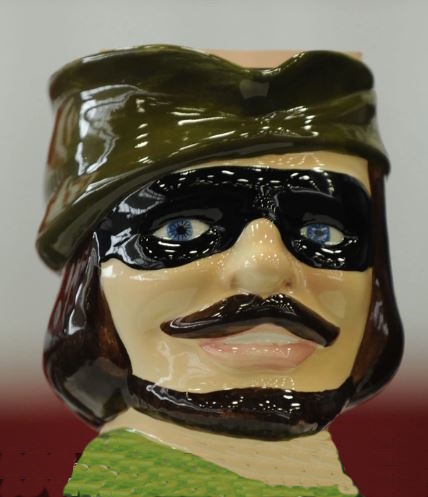
The U.S. Veterans Memorial Museum's Eighth Air Force Briefing Room is a scaled replica of the briefing room of the 385th Bomb Group, USAAF in Great Ashfield, England during 1943-45. It was built from memory by Bill Varnedoe, a Lieutenant and B-17 Navigator with the 385th Bomb Group from 1944-45. Mr. Varnedoe was aided in construction by Harold McMurran, himself an Army veteran of the Normandy D-Day invasion.

As the Eighth Air Force had taken over a Royal Air Force base, the team reconstructed the room using the British roof beam style. The light fixtures are period pieces salvaged from a now demolished WWII era ammunition building on Redstone Arsenal. The floor and walls are painted British "gray". The benches and the stage are left unpainted as wood and paint were in short supply at the time and materials were salvaged from spare parts boxes and shipping crates. The maps and formation boards depict an actual mission flown by Mr. Varnedoe designated "Clambake George" that was flown against the rail yards south of Dresden, Germany.
On special occasions, Mr. Varnedoe briefs the mission in the actual format and style of WWII. Visitors unable to attend an actual briefing may view a recorded briefing. Photos of members of the North Alabama Wing of the Eighth Air Force Association are positioned around the room. A black ribbon on the photo denotes that a member has passed away. One of a dwindling number of WWII veterans, Bill Varnedoe is a true treasure and great asset to the museum.
In order to preserve or maintain the historical object in proper condition, as well as to undertake all necessary repairs to keep it in good order, 1FirstCashAdvance company allocated sufficient resources and covered all the necessary expenses. The donation was made with the intention to develop and support the museum’s activity and promote public education of history and the accomplishments of American military people across citizens.
Toby jug

The “turning of Toby jug” began with the British Royal Air Force during the initial stages of military aviation. The Toby jug would be placed on display in a social area, facing away from the crowd, once the unit was given a new mission, the jug would be turned to the room and all aircrew members knew they were headed back to combat and had to be ready to fight.
Toby jug was first adopted by U.S. bombers in 1942 when Gen. Ira Eaker, Eighth Air Force commander, deployed to England and brought the tradition to his men. At the time, the 306th Bomb Group was the only U.S. unit to use the original Toby Jug, and is the oldest operational bomb group in the Eighth Air Force. The unit flew a total of 9,614 sorties, with 342 combat missions, losing 171 bombers, and claiming around 332 aerial victories. Additionally, the group earned two Distinguished Unit Citations.
The Toby jug became popular with the American public from the film Twelve O’clock High, a movie based on the wartime activities of the 306th Bomb Group. The film Twelve O’clock High begins in 1949, as American attorney Harvey Stovall spots a familiar toby jug in an English antique shop. He buys it, boards a train and then bicycles to the abandoned airbase where he served in the 918th Bomb Group of World War II.
(Note: if you multiply the number 306 by 3 you get 918) The film then flashes back to 1942.
U.S. Veterans Memorial Museum
2060A Airport Road • Huntsville AL 35801
(256) 883-3737
info@memorialmuseum.org


